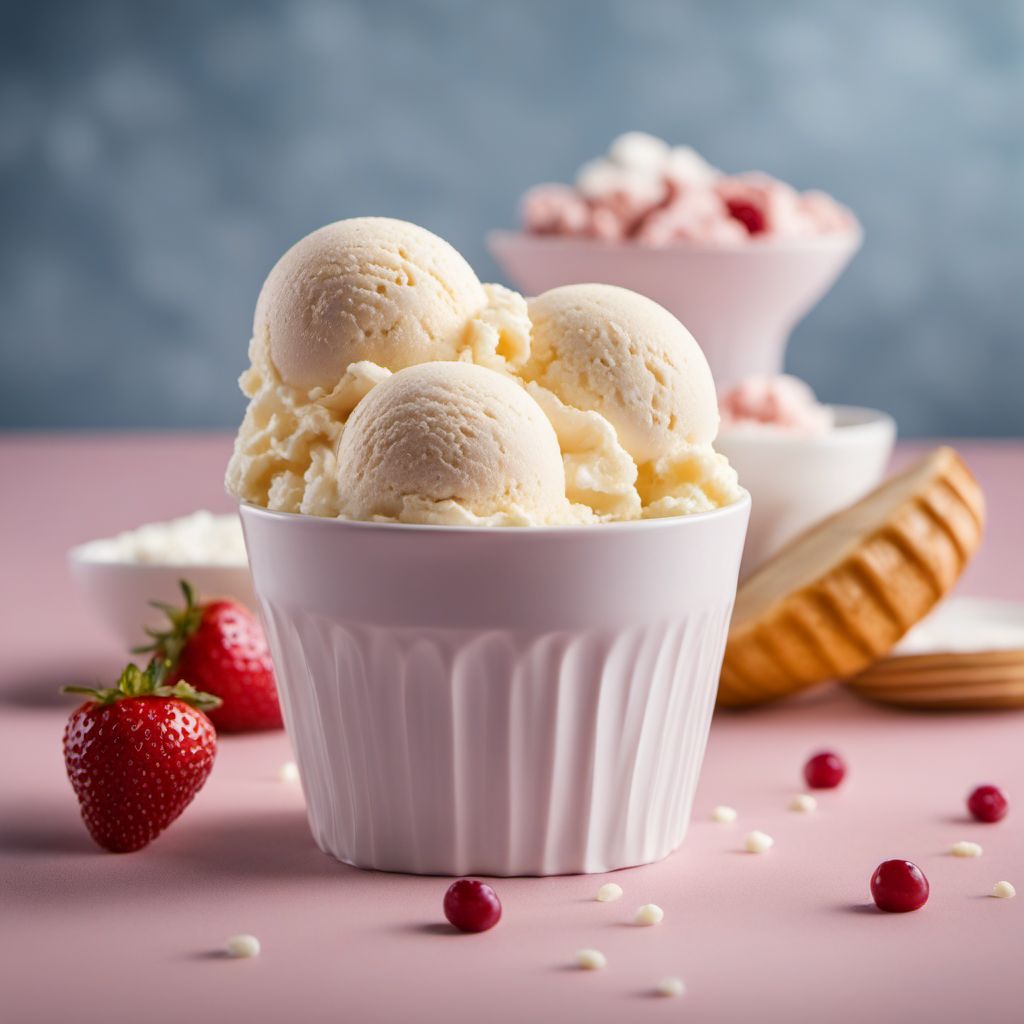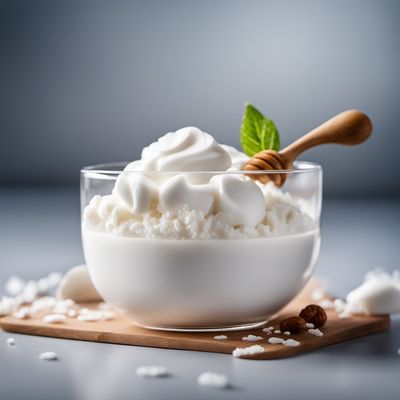
Ingredient
Dairy ice creams and similar
Frozen Delights
Dairy ice creams and similar desserts are characterized by their smooth and creamy texture, rich flavors, and wide variety of mix-ins and toppings. They are made by combining milk, cream, sugar, and flavorings, and are churned to incorporate air, resulting in a luscious frozen treat that is enjoyed by people of all ages.
Origins and history
The concept of ice cream dates back to ancient China, where a mixture of milk and rice was frozen in the snow. Over time, different cultures developed their own versions of frozen desserts, with the Arabs introducing flavors like rosewater and the Italians perfecting the art of gelato. Ice cream became popular in Europe during the 17th century and eventually made its way to America, where it gained widespread popularity. Today, ice cream is enjoyed worldwide and has become a staple dessert in many cultures.
Nutritional information
Dairy ice creams and similar desserts provide a good source of calcium, protein, and vitamins A and D. However, they are also high in calories, saturated fat, and sugar, so moderation is key.
Allergens
Dairy ice creams and similar desserts may contain allergens such as milk, eggs, and nuts, so individuals with allergies should check the ingredient list before consuming them.
How to select
When selecting dairy ice creams and similar treats, look for products made with high-quality ingredients, such as real milk and cream. Avoid those with excessive additives or artificial flavors. Opt for brands that prioritize sustainability and ethical practices.
Storage recommendations
To maintain the freshness and quality of dairy ice creams and similar desserts, store them in a freezer set at a temperature of -18°C (0°F) or below. Keep them in airtight containers to prevent the formation of ice crystals and protect them from absorbing odors from other foods.
How to produce
Producing dairy ice creams and similar treats requires specialized equipment and knowledge of the freezing process. It is best left to professional ice cream makers who have the necessary tools and expertise to create the perfect texture and consistency.
Preparation tips
To serve dairy ice creams and similar desserts, allow them to soften slightly at room temperature for a few minutes before scooping. Use a sturdy ice cream scoop to create perfectly round portions. Experiment with different toppings and sauces to enhance the flavor and presentation of your frozen creations.
Culinary uses
Dairy ice creams and similar treats are commonly enjoyed on their own as a refreshing dessert. They can also be used to create indulgent milkshakes, sundaes, ice cream cakes, and other frozen desserts. They are a versatile ingredient that can be customized with various mix-ins, such as chocolate chips, nuts, fruits, or cookie dough.
Availability
Dairy ice creams and similar treats are widely available in grocery stores, supermarkets, and specialty ice cream shops around the world. They can also be found in many restaurants and dessert parlors.



